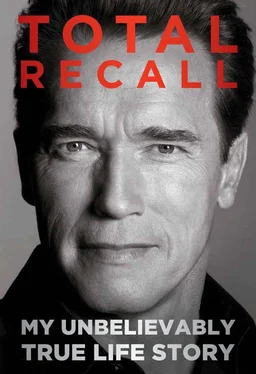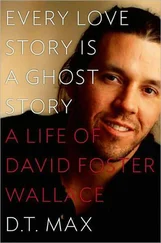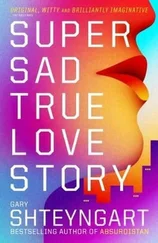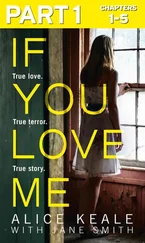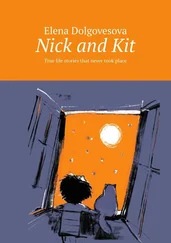Now all of a sudden people hear that you’ve had surgery. This thing that has driven you for decades is being operated on. And they talk: “What happened? Did he have a heart attack? Oh, a valve change; I don’t know what that is, really. But Jesus Christ, open-heart surgery. They had to stop his heart and open it up and change parts in there. And having to do two surgeries must mean there’s something really wrong. Sounds like terrible news. Poor guy. I mean, fuck, it’s over!”
People reacted totally differently to David Letterman’s coronary bypass surgery ten years later. Within two weeks, he was back on the show, and life went on. But no one expected him to lift up the set or run through flames or swing from the ceiling. Commonly after heart surgery, you can go back to your normal everyday life. But my everyday life was anything but normal. My stunts were not normal, and my movies were not normal, so I was seen differently. It was more like when a theoretical physicist has brain surgery. Everyone goes off the deep end and says, “Well, they said one-third of his brain was affected, and this is a disaster.”
Access Hollywood and other celebrity-gossip shows went to town on the situation. So-called medical experts who had never even met me and didn’t know of my hereditary condition or the specifics of my treatment were interviewed on TV. They’d say things like, “Under normal circumstances, when you have a surgery like that, it means you’ll have an artificial valve, and you’ll be taking blood thinners, and you would have to avoid strenuous activity that might cause injury, like a movie stunt, which might cause severe internal bleeding, and you could die immediately.” We could clarify that I hadn’t received a mechanical valve and didn’t need blood thinners, of course, but the damage was done. The studios were making decisions based on inaccurate information. People thought, “We won’t be seeing Arnold in any action movies anymore.”
_
In spite of all this, I did experience the wonderful physical rebound that often results from a heart repair. I felt as vigorous as Hercules, ready to leap back into work. In July, I was already traveling around the world promoting Batman and Robin. And, as usual, I had projects at various stages of development, with roles that interested me. With Wings as Eagles was a film in which I would have played a German army officer in the closing months of World War II who ignores orders to kill Allied POWs and saves them instead. Minority Report was envisioned as a sequel to Total Recall, with a script by the same writer. I would have played the detective role that eventually went to Tom Cruise. In Noble Father I would have played a widowed cop trying to raise three daughters and fight crime. There was a proposed movie version of S.W.A.T. , a 1970s TV action series; a movie called Crossbow , based on the legend of William Tell; and Pathfinder , about a Viking orphan raised by Native Americans at the time of the first European explorations of North America.
I didn’t even notice at first that the studios were holding back. But when I started submitting stories and scripts I wanted to do, people were slow responding. I became aware that the studios seemed reluctant to commit really big money. Fox was backing away from the idea of Terminator 3. Warner put the brakes on I Am Legend, a postapocalyptic vampire script that I was supposed to shoot that fall with Ridley Scott directing. He wanted a budget of $100 million, while Warner wanted to spend only $80 million. That was the reason the studio gave for pulling back, anyway—the real reason was my heart surgery.
In the midst of all this, I was also trying to keep Planet Hollywood from going up in smoke. Was it a fad, or was it a real business? The startup had become, to put it mildly, a crazy adventure. In the past eighteen months, I’d taken part in restaurant openings in Moscow, Sydney, Helsinki, Paris, and more than a dozen other cities all over the world. Often these openings were more like national events. Ten thousand people turned out in Moscow, and forty thousand in London. Our opening in San Antonio, Texas, turned into a citywide celebration where more than one hundred thousand people were partying in the streets. It was a huge sensation. There was no press that didn’t cover it. Planet Hollywood was like the Beatles: a genius idea with sophisticated promotion and the best marketing.
An impressive number of stars signed up as owners and participants as the company grew: Whoopi Goldberg, Wesley Snipes, Antonio Banderas, Cindy Crawford, George Clooney, Will Smith, Jackie Chan, and on and on. We had a lineup of athletes that was just as fantastic, including Shaquille O’Neal, Tiger Woods, Wayne Gretzky, Sugar Ray Leonard, Monica Seles, and Andre Agassi. The athletes were associated with the Official All Star Cafe, Planet Hollywood’s chain for sports celebrities. When Planet Hollywood went public in 1996, it had the busiest first day of trading on the Nasdaq stock exchange ever, and the total value of the company stood at $2.8 billion.
It was clear that Planet Hollywood was a great venue for a party. When we held the premiere celebration for Eraser at the Official All Star Cafe in Times Square, traffic was gridlocked for blocks. Inside, for $15, you could get a burger and a beer and watch George Clooney, Vanessa Williams, me, and the rest of the cast and our guests hanging out on the main floor below. There were interesting nostalgia displays, like part of Charlie Sheen’s collection of baseball memorabilia and a preserved slice of wedding cake from Joe DiMaggio’s wedding to Marilyn Monroe. There were counters where you could buy specially designed clothing and souvenirs.
The Planet Hollywood trips, openings, and events were all fun. Sometimes I would bring Maria and the kids, and we’d make the trip a minivacation. Sly, Bruce, and I got together and hung out. It was always interesting to meet the local celebrities, too, who were an essential part of the business. Every city has celebrities, whether it’s a football star or an opera singer or whatever. When we opened in Munich or Toronto or Cape Town or Cancún, we always involved both the international stars and the locals, and that’s what made the celebration. Local celebrities would join in because they could mingle with the international stars, and often they would have financial participation in that particular restaurant. After the grand opening, the international celebrities would draw back, and the locals would support the restaurant as a regular hangout, throw parties there, have screenings there—almost every Planet Hollywood was built with a screening room.
Going public gave the company capital to expand. But we saw very quickly the drawbacks of being publicly owned, too. Compared to regular restaurant chains such as Ponderosa or Applebee’s, Planet Hollywood had high expenses, and if you weren’t on the inside, or out there promoting the business, it was hard to see why certain big-ticket items made sense.
For instance, corporate jets: Planet Hollywood spent lots of money flying celebrities around. Actually, this was the best way to cement the loyalty of the stars; even more effective than the stock options they also received. Big-time celebrities don’t like flying commercial, and yet very few have their own planes. For this reason, the Warner Bros. studio operated its own little air force for twenty or thirty years, keeping a set of planes to fly Clint Eastwood and other major actors and directors around. Warner also had houses in Acapulco, Mexico, and Aspen and apartments in New York. These were like candies for celebrities. If you were part of the Warner family, you could use all of that for free. And those actors and directors stayed with the studio, signing contract after contract, because they knew if they went to, say, Universal, there would be no more corporate jet. We had that same magic working for us, and yet shareholders would say, “Wait a minute, why are you wasting all this money on celebrities? I don’t want to pay for that.”
Читать дальше
